TIMERITE® was developed and funded by AWI and CSIRO. Updates and improvements were made by Cesar Australia and CSIRO, with funding from AWI, GRDC, MLA and Cesar Australia.



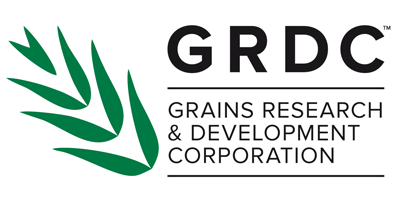
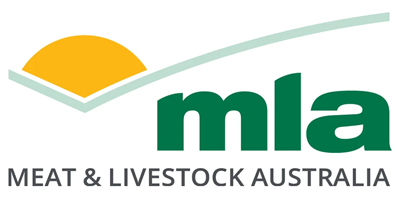
Redlegged earth mites are an introduced pasture and crop pest in southern Australia. They are estimated to infest over 20 million hectares of pasture and crop causing over $200 million damage by way of failed plant establishment and reduced productivity in pastures (Ridsdill-Smith 1991) and over $44 million damage in grains crops annually (Murray et al. 2013).
The first step to managing redlegged earth mites (RLEM) is good monitoring. Once RLEM are identified, it is important to understand the risk level for RLEM damage next autumn before spraying.
Spraying according to your spring TIMERITE® Best spray date will help minimise the damage to your pastures and crops next autumn. Your TIMERITE® calculation is based on using a long residual pesticide for control (e.g. omethoate). Other pesticides with shorter residual activity may have reduced efficacy.
RLEM life cycle
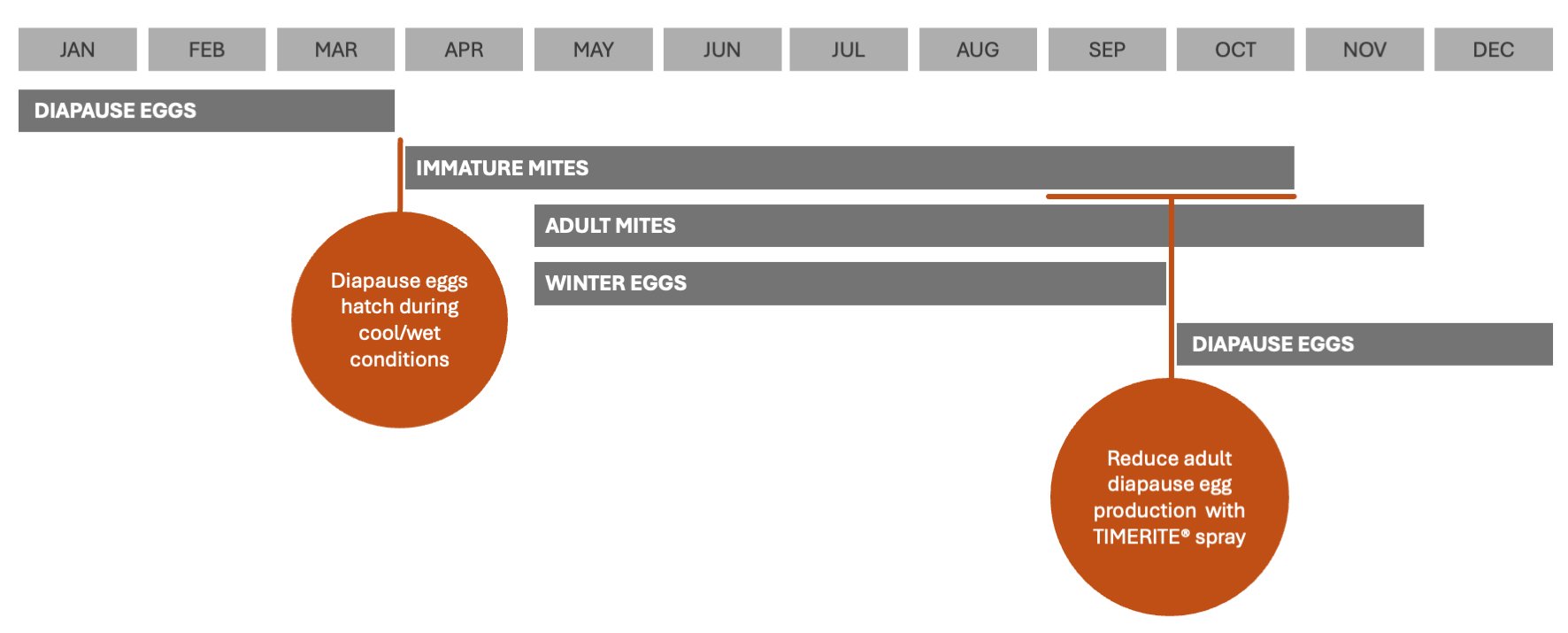
Image with thanks to Cesar Australia.
Know your mite
TIMERITE is effective against RLEM, but not against blue oat mite – so it’s vitally important you know which pest you’re dealing with!
RLEM
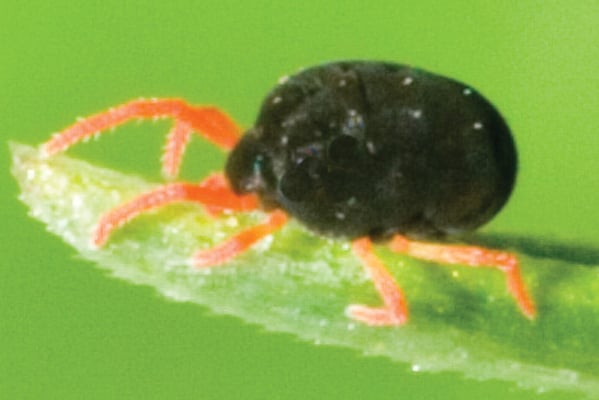
Blue oat mite
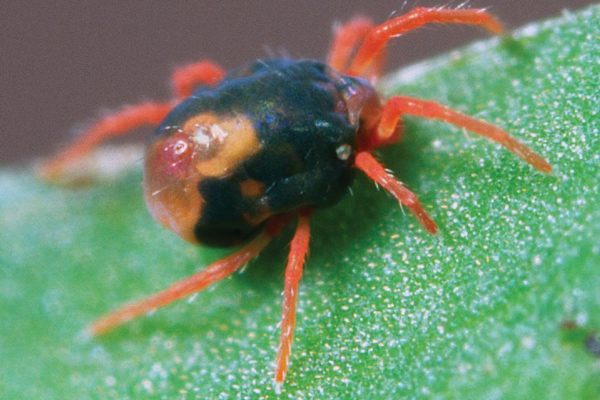
Images with thanks to Cesar Australia.
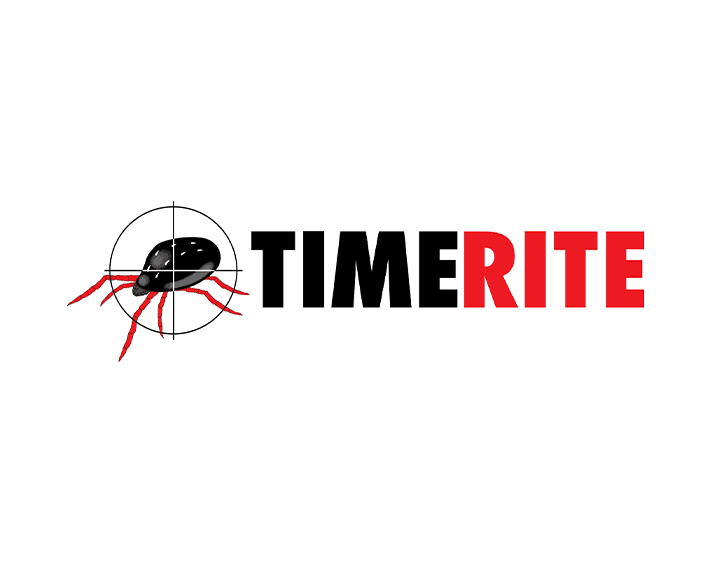
When should I use the TIMERITE® spring spray?
Only spray if you need to. Overuse of spraying can lead to insecticide resistance, which is becoming more widespread in RLEM.
First reduce RLEM risk with the following strategies:
- avoid sowing highly susceptible pasture species or crops into paddocks known to have high mite numbers
- incorporate a cereal crop into your rotation to reduce mite numbers
- manage weeds, especially broadleaf weeds in fencelines, which favour RLEM
- heavy pasture grazing in spring, stubble burning, or cultivation can help reduce mite numbers in the following autumn.
Spray according to your TIMERITE® Best spray date if:
- You can see high numbers of RLEM on plants or significant feeding damage across paddock in spring;
- You are planning to reseed clover pasture; or
- You are planning to plant a mite-susceptible crop next year, such as canola.
Find your TIMERITE™ Best spray date
Type your postcode into the box below, select your locality from the list, then click ‘Calculate TIMERITE’ to get your TIMERITE™ Best spray date.
Mites going into diapause
Mite population recovery following control
Successful control of RLEM depends on the right timing. Spraying too early in spring allows populations to recover before the season end, while spraying too late means the populations will already be in diapause (eggs are ready for ‘oversummering’).
The TIMERITE® Best spray date is the calculated point of maximum control.
The TIMERITE® Best window of opportunity is the period where control is still very high (at least 95% as good as the TIMERITE® date).
The graphs above show the RLEM diapause status and relative population abundance through time following spraying (control), as marked by the red line.
Change the TIMERITE® User selected spray date red line on the first graph (by clicking on the circles on the black line) to observe the effect of different spray dates on population recovery and the importance of using the TIMERITE® Best window of opportunity to your advantage.





Further information
Currently registered products for RLEM
Redlegged earth mite best management practice guide – Southern
Strategies for control of the redlegged earth mite in Australia. Ridsdill-Smith, T.J., Hoffmann, A., Mangano, P., Gower, J., Pavri, C., Umina, P. (2008). Australian Journal of Experimental Agriculture 48, 1506-1513.
Controlling redlegged earth mite, Halotydeus destructor (Penthaleidae: Acari) with a spring spray in legume pastures. Ridsdill-Smith, T.J. and Pavri, C. (2015). Crop and Pasture Science 66, 938-946. Dx.doi.org/10.1071 (CP14272).
For further inquiries or more information, please contact the AWI Office on 02 8295 3100.













